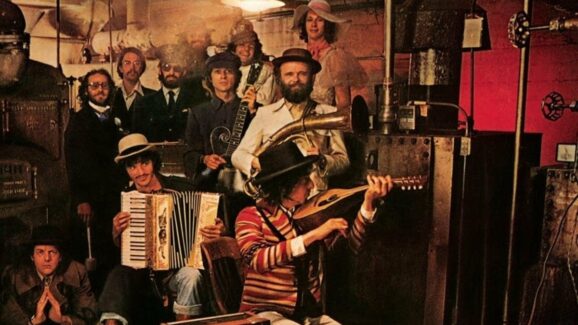David Bowling’s Eric Clapton FAQ is written like a trip through that part of the authors music collection devoted to the archetypal guitar hero. As such it is comprehensive to a point, covering in no small detail Slowhand’s earliest work, including his stints in The Yardbirds and John Mayall’s Bluesbreakers, then through his solo career and into the new millennium. And yet, while Bowling’s writing displays an obvious passion, his insight into his subject is limited by his very devotion to his it and even more so by an all-too-often clumsy editing of the content that fails to broaden the scope of the work.
Minutiae abounds in Eric Clapton FAQ and, particularly in the early stages of the book, it is less rather than more trivial. Modern day and long-term Allman Brothers’ fans may not be aware for instance, that Duane’s given first name is actually Howard. And the connection between the late guitarist’s legacy and EC’s is all too clear from their partnership on Layla and Other Assorted Love Songs.

As Bowling gets further into the book, giving focus to Eric Clapton’s collaborators over the years as well as his own guest spots on behalf of other musicians, the author’s deep feeling for his subject betrays him. His prose becomes forced, as if he is straining to fulfill a commitment to a designated number of words and pages, while the formatting of the book undermines him as well. It’d only make sense to populate the pages devoted to album cover art to images of those items the author deems most memorable, but the pages are largely devoted to prose that all too often smacks of being ground out rather than inspired.
As such, of course, the particularly knowledgeable and objective reader might suggest the book is an accurate reflection of Eric Clapton’s career, the progression of which has, notwithstanding his largely consistent commercial popularity, contained more than its share of the prosaic–both live and studio releases from the Seventies and Eighties all the way to the present day–compared to the truly brilliant (Derek & the Dominos, his latter-day partnership with Steve Winwood). Yet what begins as a careful examination of the man’s artistic evolution bogs down in pedestrian perceptions that offer less rather than more insight. Bowling makes much of Clapton’s pivotal contributions to Delaney & Bonnie’s work, and rightly so, but gives all too short shrift to the various versions available of his eponymous solo album on which they collaborated.
Like other inclusions in the ‘FAQ’ series devoted to music, streamlining the content would highlight the expanse of the author’s knowledge. Bowling’s initial vague reference to Felix Pappalardi’s work subsequent to his production of Cream albums belies the additional detail he devotes to the bassist/composer/producer of Mountain, yet leaves an impression the book is a product of a cut and paste method that undermines it continuity. Similarly, the discussion of those recordings on which Slowhand has guested might well be combined with the valuable information Bowling shares about figures as ephemeral as vocalist Martha Velez and essential as producer Simon Climie.
David Bowling’s execution of Eric Clapton FAQ thus doesn’t wholly match its concept. As carefully researched as his introduction to the chapter on the man’s electric guitars of choice, a similar chapter devoted to bootleg recordings reads all too subjective from the writer’s point of view as a collector. And how any book devoted to one of the major proponents of blues can make no mention of its subject’s devotion to one of his role models–Clapton took Muddy Waters on the road as his opening act in 1979 after the latter’s career was resurrected through work with Texas bluesman Johnny Winter—is an oversight that undermines Bowling’s credibility. The absence of a discography is mystifying too: given there’s a bibliography including books and magazines, it’s more than a little puzzling Bowling didn’t compile a corresponding list of recordings, 45 singles, albums and cd’s all of which items would seem to be the main resource for Eric Clapton FAQ.
Perhaps the best approach to take with David Dowling’s book is to read it in random sections rather than cover-to-cover. Then the wealth of information within finds its own level of worth relative to the reader’s own knowledge of Eric Clapton.










One Response